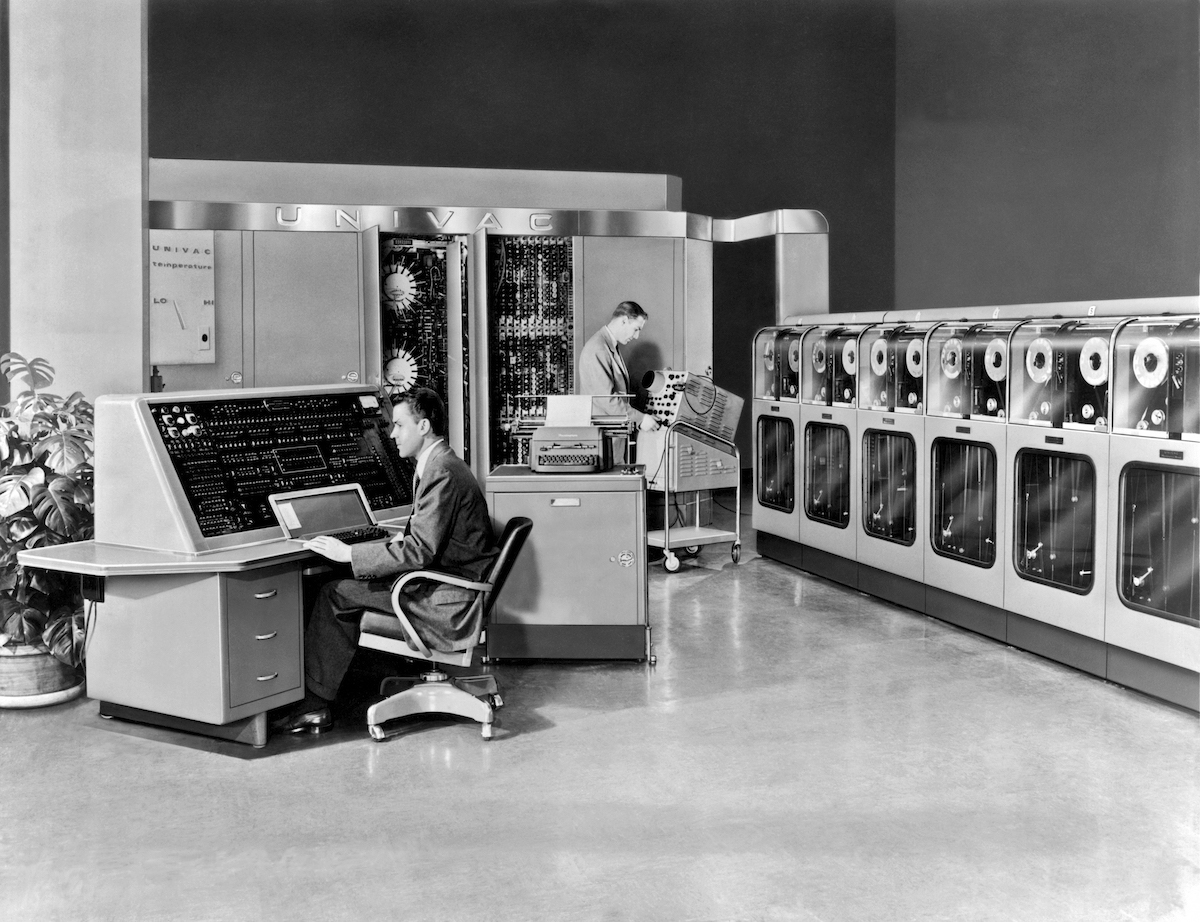
Exactly 65 years ago, on Mar. 31, 1951, the U.S. Census Bureau signed a contract for the first commercial computer in the U.S. and thus entered a new era. When UNIVAC—the Universal Automatic Computer—was dedicated a few months later, the New York Times called the machine “an eight-foot-tall mathematical genius” that could in one-sixth of a second “classify an average citizen as to sex marital status, education, residence, age group, birthplace, employment, income and a dozen other classifications.”
Until then the Bureau’s data had been handled with help from an electric counting machine first developed for the 1890 census. Advances in computer technology during the Second World War made for faster processing speeds—a development of particular interest to the Census Bureau, given the volume of data associated with regularly counting the U.S. population.
UNIVAC was designed by J. Presper Eckert and John W. Mauchly. During the war they had designed ENIAC, a large-scale general purpose computer, at the University of Pennsylvania. In 1946 the pair left the university to start a commercial venture and secured a contract with the National Bureau of Standards to study what would be required for a computer for the Bureau of the Census. The study, originally expected to take six months, took longer than expected and Eckert and Mauchly didn’t start building the machine until 1948. Their skill with estimating costs lagged far behind their skill as engineers, and in 1950 they sold their struggling company to Remington Rand, a manufacturer of business machines. Eckert and Mauchly continued their work on UNIVAC, now as a division of Remington Rand.
TIME explained the promise of the not-yet-released UNIVAC in Nov. 1950:
Allen N. Scares, vice president and general manager of Remington Rand, Inc., told of a machine, UNIVAC, manufactured by his company, that can do most of the numerical tasks now performed by flesh & blood clerks… UNIVAC can compute a complicated payroll for 10,000 employees in only 40 minutes. How many clerks UNIVAC would replace Scares did not say. He was confident that Remington Rand had not created a “Frankenstein [monster] which can turn upon us and wreck the very foundations of our society. History has demonstrated that there is an ultimate good in every new tool . . . The acceptance is gradual as the new tool proves its worth. It has never occurred as a sudden change.”
UNIVAC was a stored-program computer that had 5,400 vacuum tubes, could tabulate 4,000 items a minute, used alphanumeric characters, checked its own work and was “just” half the size of ENIAC—a then-tiny 14 ft. long, 7.5 ft. wide and 8 ft. high.
Get your history fix in one place: sign up for the weekly TIME History newsletter
At the end of March 1951 UNIVAC underwent a series of tests to confirm for the Census Bureau that it really would work as expected. The tests, described in the American Mathematical Society’s Jul. 1951 Mathematical Tables and Other Aids to Computation, confirmed the reliability of its commands, its ability to convert information from punch cards to magnetic tape, its skill at reprinting large amounts of information without errors and its overall performance.
Having passed these tests, the Census Bureau put it to work, first on some sections of the 1950 census and then on the entire economic census of 1954. Twelve years later, the UNIVAC was given to the Smithsonian and replaced by newer machines. The Times headlined its retirement thus: “Automation Claims Another Job.”
More Must-Reads from TIME
- Cybersecurity Experts Are Sounding the Alarm on DOGE
- Meet the 2025 Women of the Year
- The Harsh Truth About Disability Inclusion
- Why Do More Young Adults Have Cancer?
- Colman Domingo Leads With Radical Love
- How to Get Better at Doing Things Alone
- Michelle Zauner Stares Down the Darkness
Contact us at letters@time.com